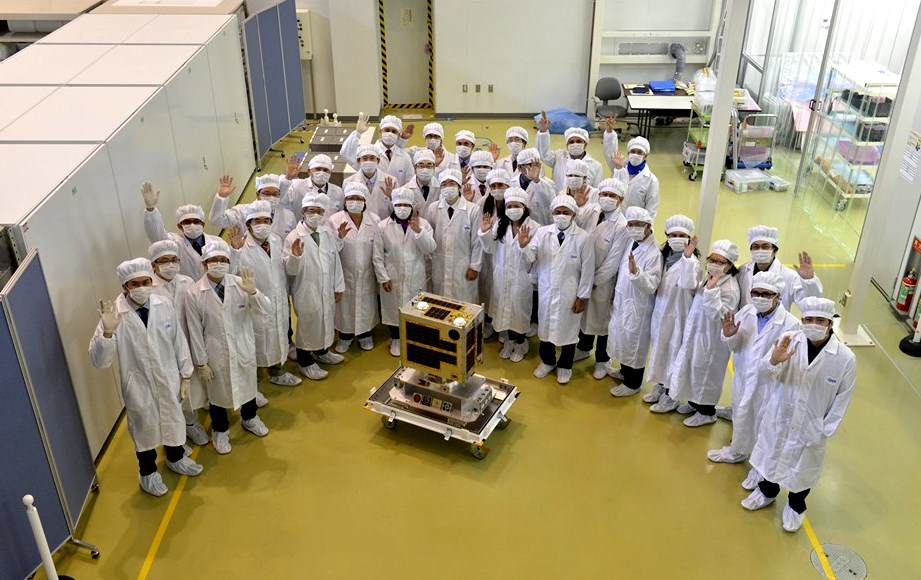Diwata will watch, help PH farmers from space

DIWATA TURNOVER Filipino scientists from the University of the Philippines and Department of Science and Technology officials turn over the first Philippine microsatellite called Diwata 1 to their counterparts at Japan Aerospace Exploration Agency (Jaxa) in Tsukuba City. PHOTO COURTESY OF DOST
WITH Diwata watching over the Philippines from space, expect that she will guide Filipino farmers to become better prepared during times of extreme weather events, such as the El Niño phenomenon.
Science Secretary Mario Montejo Wednesday said that with the space launch in April of Diwata, touted to be the first Filipino-made and codeveloped microsatellite, the government would soon have at its disposal essential data on weather systems “crucial for our farmers to adjust planting methods and procedures in light of climate change.”
Article continues after this advertisementDiwata, officially called the Philippine Scientific Earth Observation Microsatellite (Phil-Microsat), was turned over in a ceremony Wednesday by young Filipino scientists from the University of the Philippines and officials of the Department of Science and Technology, led by Undersecretary for Scientific and Technological Services Rowena Cristina Guevara, to their counterparts at the Japan Aerospace Exploration Agency (Jaxa) in Tsukuba City for further testing.
Once the microsatellite is in orbit, it can provide “vital information to our farmers so they will [know] what crops to plant, when to plant and how they can provision contingencies in overcoming the ill effects of El Niño up to the middle of 2016,” according to Montejo.
He explained that through Diwata, the Philippine Atmospheric, Geophysical and Astronomical Services Administration (Pagasa) would “greatly improve” its capabilities in making accurate forecasts and weather monitoring essential to agriculture.
Article continues after this advertisementIt was through satellite weather data acquired from independent providers that Pagasa was able to draw up a strategy before the onset of El Niño last year, Montejo said.
“By investing in our intellectual resources [and] harnessing the best minds in our country, we developed Diwata to provide our people the opportunity to reap the many benefits it offers aside from information critical to agriculture. [T]hese same data can be used to monitor our forest cover and natural resources, implement a responsive disaster risk management program like Project Noah, enhance water resources management systems, and improve weather monitoring and forecasting,” he said in a statement.
READ: 1st PH-made satellite set to go into space
Carlos Primo David, executive director of the Philippine Council for Industry, Energy and Emerging Technology Research and Development, said that after the turnover, Japanese experts would conduct final tests on the microsatellite’s spaceworthiness before sending it over to the National Aeronautics and Space Administration (Nasa) of the United States.
Nasa will then hand the device over to SpaceX, which will launch sometime in April a rocket carrying the microsatellite to the International Space Station (ISS).
Upon the entry of the 50-kilogram “balikbayan-box-sized” microsatellite into the ISS, an astronaut would then conduct a final check on the device before releasing it in orbit for at least 18 months, David explained.
Diwata, symbolically named after the Filipino mythological character that guards or watches over nature, will be the first of two microsatellites to be launched into space until next year. It is part of a three-year, P840.82-million program, which also includes the establishment of a ground receiving station in Subic, Zambales province, called the Philippine Earth Data Resources Observation (Pedro).
Pedro will receive and store data sent by Diwata, which is expected to take a daily average of 3,600 high-resolution images using its four cameras.